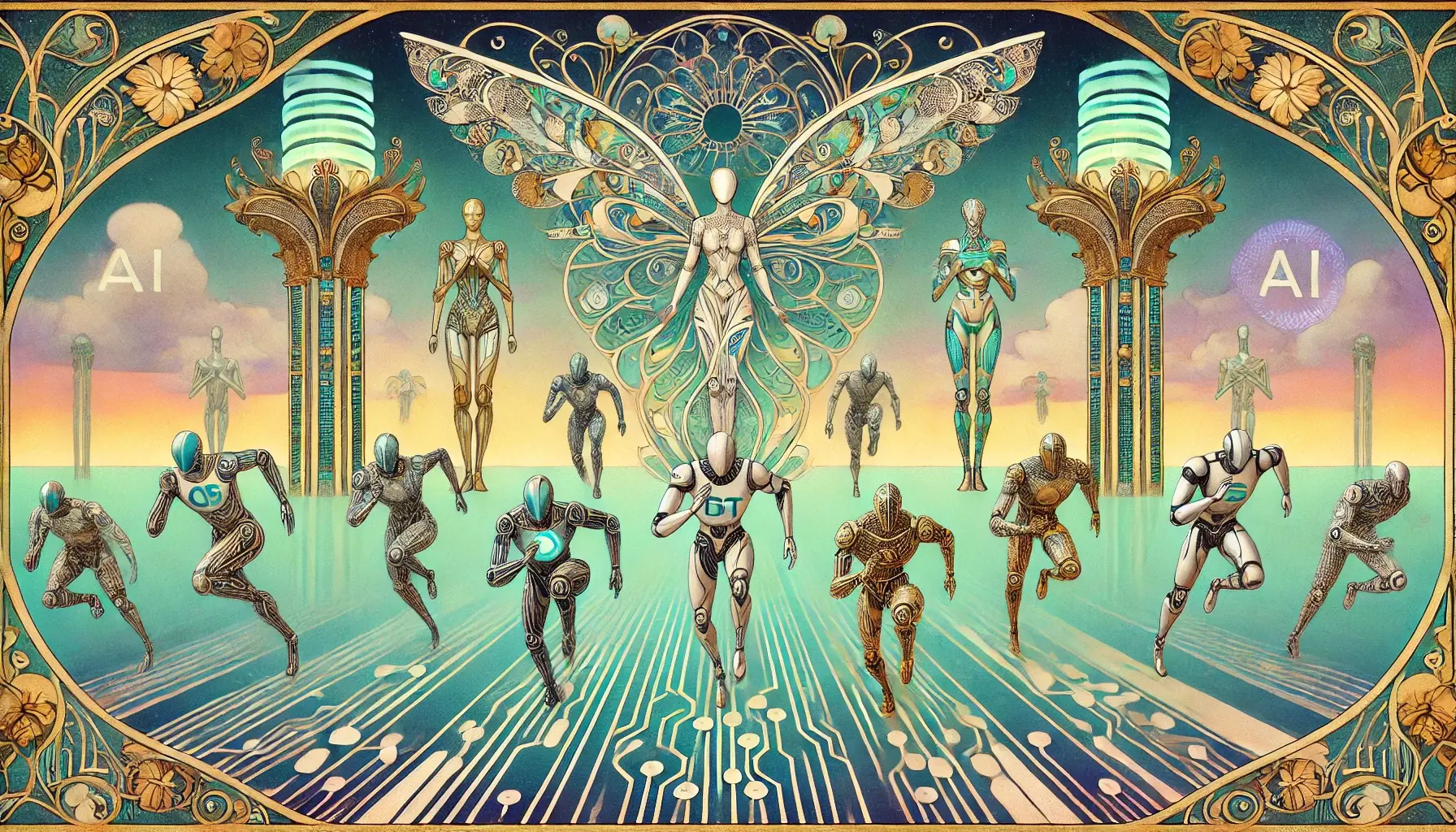A deep dive into the latest AI battleground and what it means for practical applications
🎧 NEW EPISODE: The Great AI Reality Check - GPT-5 vs. Grok-4 Showdown
July 2025 shook the AI world with two massive releases just 48 hours apart. OpenAI dropped GPT-5, promising "a team of PhD experts in your pocket." xAI fired back with Grok-4, claiming to be "the world's most intelligent model." But what happened when the dust settled?
In this episode, we dive deep into:
- Why German users called GPT-5 "colder" and Grok-4 "awful in real-world use"
- The shocking benchmark battle: Who really won on coding, math, and reasoning?
- How students at Kiel University are using these models (and where they're failing)
- Anthropic's Claude: The steady competitor everyone's overlooking
- The open-source question: Are we heading toward an AI oligopoly?
- Real talk from Hamburg developers and Bamberg marketers using these tools daily
The reality? Neither model delivered the revolution promised. But the insights from actual users reveal something far more interesting about the future of AI in business.
From benchmark wars to boardroom decisions - this is the AI reality check you need to hear.
🎙️ Listen now and discover which AI model actually deserves your attention in 2025.
The AI landscape exploded in July 2025 with two major releases that promised to reshape our understanding of artificial intelligence capabilities. OpenAI's GPT-5 launched on July 8th, followed just two days later by xAI's Grok-4. But beyond the marketing hype and impressive benchmark scores lies a more nuanced reality that's worth examining closely.
GPT-5: The Promising Giant with Growing Pains
OpenAI positioned GPT-5 as a quantum leap forward—"like having a whole team of PhD experts in your pocket," as CEO Sam Altman put it. The technical specs are indeed impressive: a unified adaptive system that automatically switches between a fast model for routine queries and a "thinking model" for complex logical processes, with context windows reaching 400,000 tokens via API.
The improvements are tangible: enhanced logical reasoning, higher-quality code generation, reduced hallucinations, and seamless integration with platforms like Gmail and Google Calendar. GPT-5's "test-time computing" capability allows it to process new data from user prompts in real-time—a significant technical achievement.
But reality hit hard. User reception has been decidedly mixed. Many found the improvements "incremental" rather than the expected "quantum leap." More concerning, advanced users criticized GPT-5's personality as "colder and more mechanical" compared to GPT-4o, leading to significant backlash. OpenAI has since promised to make GPT-5 "warmer and friendlier" and restore access to older models like GPT-4o and o3.
Grok-4: The Aggressive Challenger
Just two days later, xAI launched Grok-4, boldly claiming it as "the world's most intelligent model." With native tool usage, real-time search integration, and transparent chain-of-thought reasoning, Grok-4 positioned itself as a direct competitor to OpenAI's offering.
The benchmark battle is fascinating:
-
Logical reasoning (GPQA Diamond): GPT-5 leads with 89.4% vs. Grok-4's 87.5%
-
Mathematics (AIME 2025): GPT-5 achieved a perfect 100%
-
Agentic coding (SWE Bench): Grok-4 slightly edges out with 75% vs. GPT-5's 74.9%
-
ARC-AGI-2: Grok-4 surprises with 15.9% vs. GPT-5's 9.9%
However, Grok-4 faces its own challenges. Some users describe it as "awful in real-world use," particularly for creative output and data analysis. More troubling are the controversies around bias and inappropriate responses that required xAI to issue apologies and adjust system prompts.
The German Perspective: Practicality Over Hype
German users, known for their pragmatic approach to technology, offer particularly insightful feedback. Students at Kiel University of Applied Sciences use Grok-4 for data analysis and literature research, significantly accelerating complex statistical work. A Hamburg-based software developer found Grok-4 impressive for code reviews but noted critical blind spots—missing subtle security vulnerabilities that experienced developers would catch.
This highlights a crucial disconnect: while benchmark scores suggest these models are approaching human-expert levels, real-world application reveals persistent gaps in practical judgment and domain expertise.
Anthropic: The Steady Competitor
Amid this high-profile battle, Anthropic's Claude models maintain a strong position as a "Swiss Army knife" of AI capabilities. Claude excels particularly in:
-
Coding tasks: Many users consider Claude superior to GPT-5 for programming and UI development
-
Safety and responsible AI: Showing 91% rejection rates on AIR-Bench safety tests
-
Language style: Claude 3.5 Sonnet leads style leaderboards for text generation
However, Anthropic faces pressure from Google's Gemini, which outperforms other models in user-focused metrics, and criticism over "predatory pricing" that makes product testing difficult for new customers.
The Open Source Question
Perhaps most intriguingly, the gap between open-source and proprietary models is narrowing rapidly. The AI Index Report 2025 shows the performance difference shrinking from 8% to just 1.7% in a single year. This convergence raises fundamental questions about the sustainability of premium pricing for proprietary models.
OpenAI's brief experiment with "open-weight" models received mixed reviews, with many considering them mediocre compared to other open-source alternatives like Qwen or GLM 4.5. Meanwhile, Elon Musk's promise to open-source Grok could accelerate this trend further.
Beyond Benchmarks: The Real-World Reality Check
The most important lesson from this AI arms race isn't found in benchmark scores but in practical applications. While models excel at narrow, well-defined tasks (Python coding, multiple-choice tests), real-world usage demands broader capabilities: document summarization, technical support, work review, and data structuring.
Consider the European business perspective: companies like SAP, Dassault Systemes, and the London Stock Exchange Group face potential disruption from rapid AI automation. The fear isn't just about job displacement—it's about entire established software ecosystems becoming obsolete overnight.
Looking Forward: Evolution, Not Revolution
Despite the hype, we're witnessing evolution rather than revolution. The technology is becoming more accessible and integrated into daily workflows, but fundamental challenges remain around ethics, privacy, and socioeconomic impact.
The carbon footprint concern is real—newer models like Llama 3.1 405B consume significantly more power than their predecessors, even as inference costs plummet. This sustainability challenge will likely shape future development priorities.
The Bottom Line
Both GPT-5 and Grok-4 represent impressive technical achievements, but neither delivers the transformative breakthrough their marketing suggested. GPT-5 dominates mathematical and logical reasoning but struggles with user experience. Grok-4 shows strength in coding tasks but faces reliability and bias issues. Claude maintains steady competence across multiple domains while prioritizing safety.
For organizations considering AI adoption, the message is clear: focus on specific use cases rather than general "intelligence" claims. Evaluate models based on your actual needs—whether that's code review, data analysis, or customer support—rather than benchmark scores.
The AI race continues, but the real winners will be those who prioritize practical utility, user trust, and sustainable development over pure performance metrics. As the German users in our examples demonstrate, the most valuable AI is the one you can rely on for real work, not the one with the highest test scores.
The future of AI isn't about choosing the "smartest" model—it's about finding the right tool for the right job at the right time.

